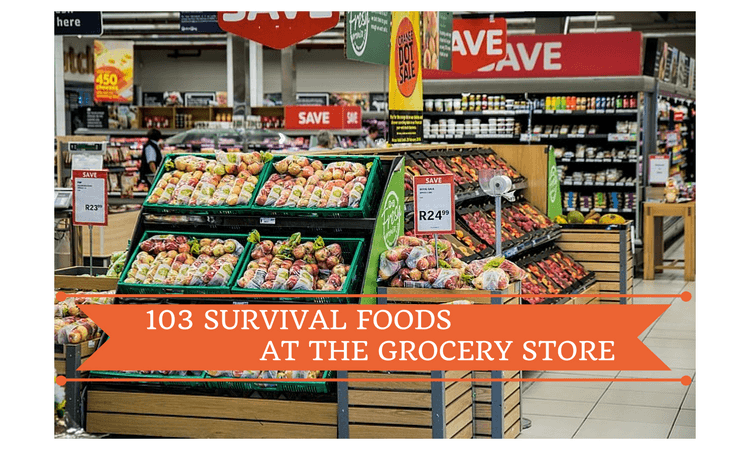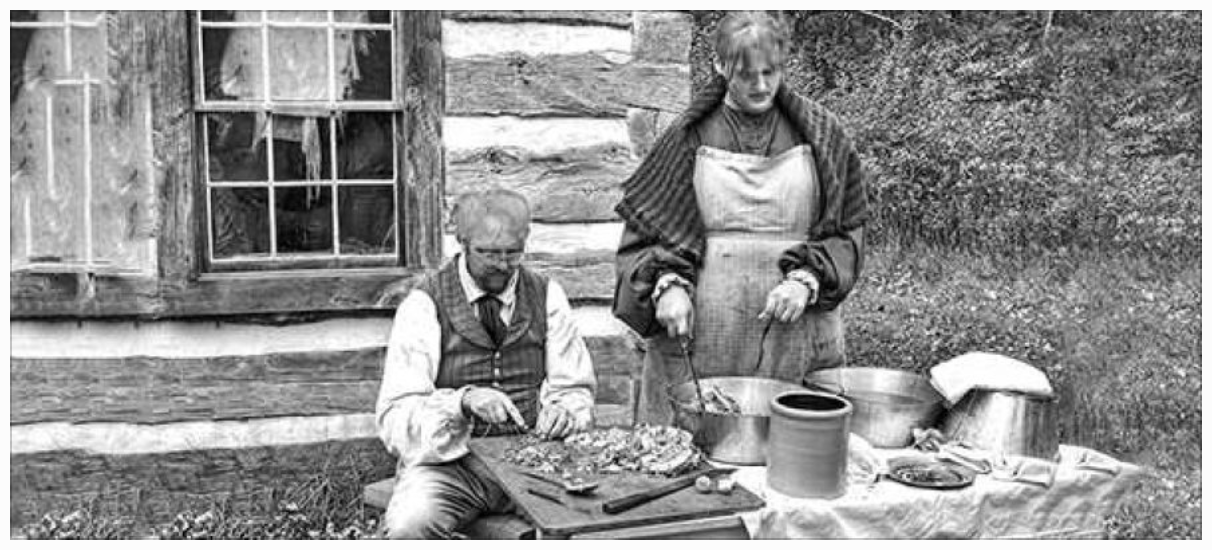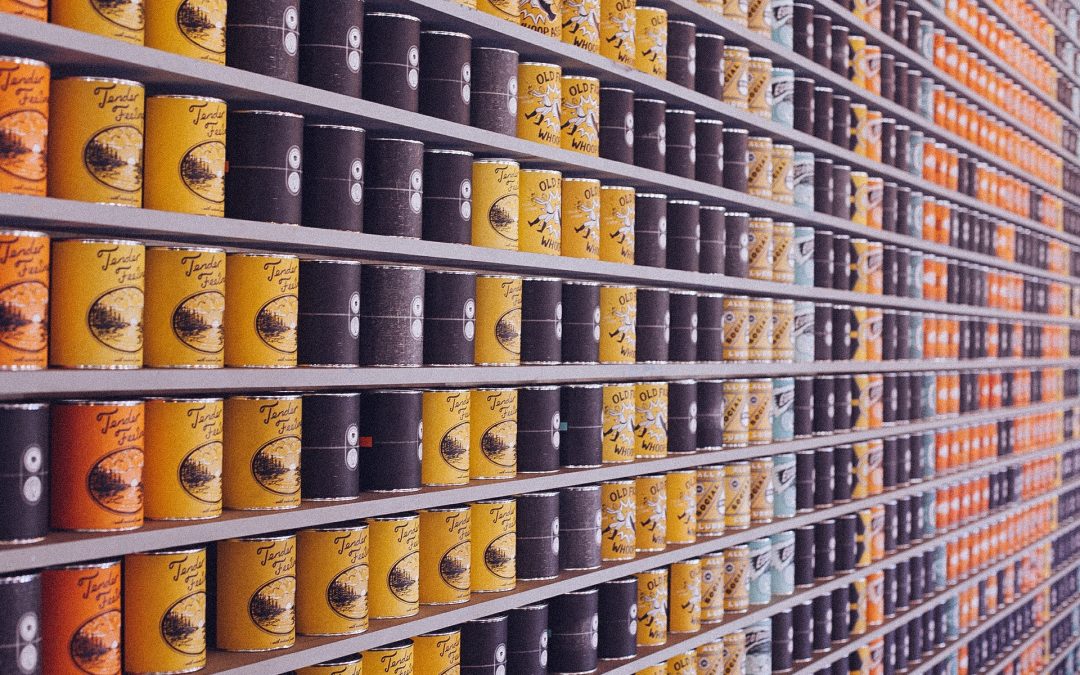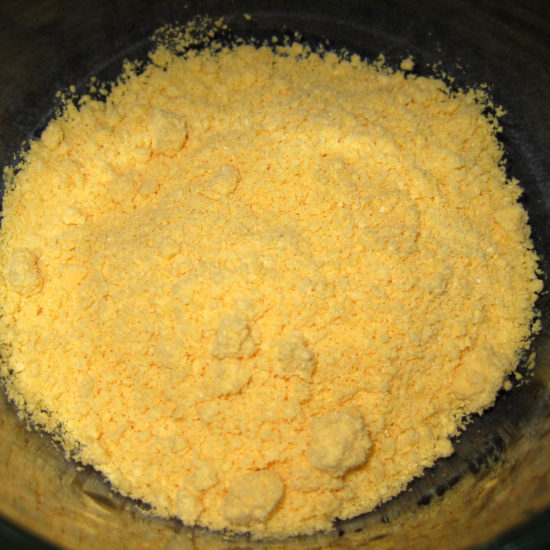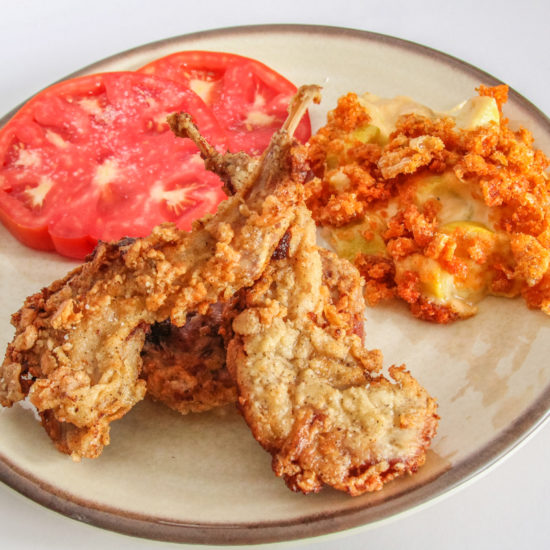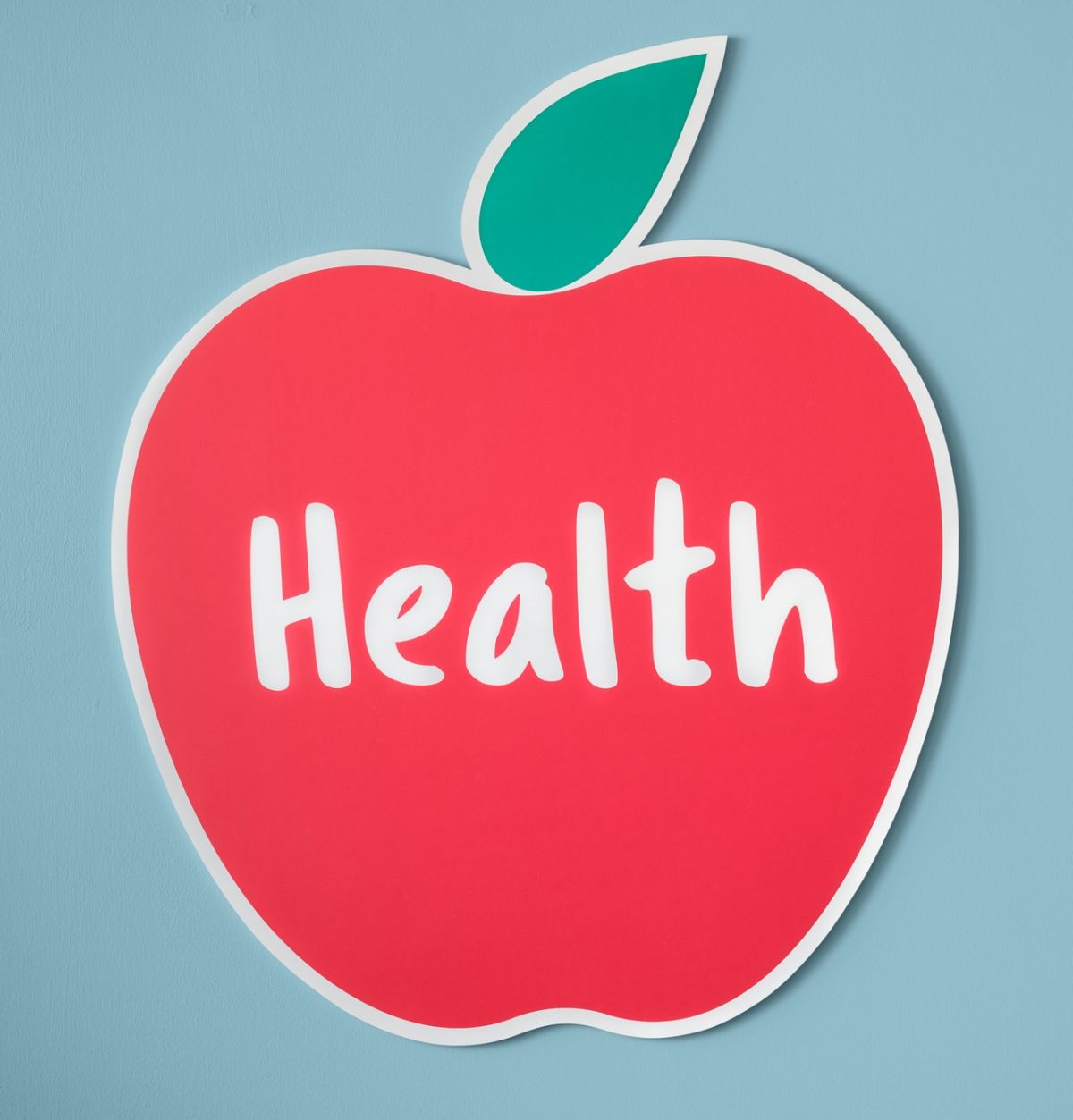
With plenty of clean drinking water and shelter to sleep, the average adult can survive for several weeks or longer without food. This means that in a short-term survival situation, any kind of food, even unhealthy food or “junk food’ will be comforting.
This is fine for a short-term situation where the goal is to satisfy your rumbling stomach and hang on until help arrives that you know is on the way. But in a long-term survival situation where “help” is likely not coming, proper nutrition becomes critical to survival from day one.
Proper nutrition is important from day one in a survival situation because without the right vitamins, minerals, and other nutrients your body needs, your body begins to be negatively affected in multiple ways. Lack of proper nutrition over time of course can negatively impact anyone. But lack of proper nutrition in a long-term survival or SHTF situation means your physical strength and mental clarity can diminish rapidly. This is detrimental to your long-term survival because chances are, you will be expending a lot more energy on a daily basis than in your normal routine which means your body begins to fall apart much faster.
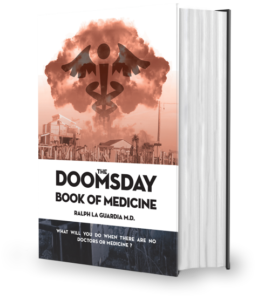
Want to learn about essential health practices, the right way to take vitamins, and why they currently aren’t working for you? Find out more HERE.
Most people know that staying well hydrated is of the utmost priority but make sure you’ve planned for multiple ways to have access to fresh drinking water. Stockpile sports drinks that are low in sugar but packed with electrolytes to replace those that are lost while hiking to your BOL, hauling water, chopping wood for a fire, or foraging for wild edibles.
Following a SHTF situation, you will have innumerous tasks you must accomplish just to survive. Even for those people whose normal days are active and can barely find time to sit down, the strenuous tasks needed for basic survival will be challenging. In a survival situation, a lapse in mental focus for just a few moments can cost you your life or the life of a family member. You must be on alert nearly constantly for dangers that could be lurking. Adrenaline may get you through the first couple days, but only a well-balanced diet can combat the mental and physical fatigue that will set in quickly following a SHTF event. A lack of physical strength and stamina can seriously hamper your ability to rejuvenate for the next day’s tasks, heal quickly from injuries, and ward off illness and diseases.
Some of the effects of inadequate nutrition that can be detrimental in a survival situation include:
- Poor mental focus and clarity
- Physical weakness
- Fatigue or Lack of Energy
- Drowsiness
- Depression
All of these issues can really have a negative impact on how well you can get strenuous tasks completed and make you more likely to be injured or get sick. In addition to some of the effects above, a SHTF or other survival situation comes with additional stress, inadequate sleep and relaxation time, and increased threats from outside sources. In a SHTF situation, professional medical help and pharmaceutical medicines will be in short supply if they are available at all. It’s critical that you work proactively to prevent any illness, injury, or diseases if you’re going to survive.

Want to learn about essential tools for treating most diseases you are likely to encounter? Details HERE.
Survival Food Needs
Carbohydrates
These are starches, sugars, and fiber that is contained in foods. They can be complex or simple. Natural sugars like those found in vegetables, fruits, milk, and some added sugars are simple. Whole-grain breads, starchy vegetables, cereals, and legumes are good sources for complex carbohydrates. You need a balance of simple and complex carbohydrates in your diet. Carbohydrates assist in providing the body with energy and help guard protein stored in the body.
Without sufficient carbohydrates in your daily diet, metabolism of fatty acid suffers and the body becomes weaker. Carbohydrates should make up approximately half of your caloric intake for a normal day, no less than 60 grams minimum. So, for the average adult during a SHTF situation, you’ll want to be much higher and get as close to half your caloric intake as possible.
Carbohydrates come from:
- edible plants are easily accessible if you know how to identify them properly
- white rice
- grains like wheat and oats
- root and tuber vegetables
- cereals
- honey
- fruits
- sugars

This book teaches you what to do when your doctor is not around. Follow this link for details.
Protein & Healthy Fats
Protein is found in foods such as eggs, meats, and beans. Proteins are important because your body breaks these down into amino acids which are distributed through your body. It’s also important for a wide variety of essential things including provision of nitrogen you can’t get from lipids or carbs. They also help balance pH and are vital for the immune system. Recommended daily protein intake is 20 to 25% normally and more during strenuous activity.
Healthy fats are critical because they are an energy source but also because they help the body to properly absorb vitamins. Omega 3s are healthy fats found in fatty fish and in plant oils such as corn oil, olive oil, and sunflower oil. Healthy fats are vital for creating fatty acids and glycerol. Fatty acids help to regulate inflammation in the body and glycerol is a naturally occurring carbohydrate that serves as a source of fuel for the body. Recommended amount of healthy fats is around 10 to 30% of total calories per “normal” day so for a SHTF situation you’ll want to be closer to 30% most days.
Protein comes from:
- many different insects if the situation is dire
- fresh meat such as rabbits, chickens or other poultry (start raising them now)
- peanut butter, legumes, and nuts
- eggs
- canned fish and meat
- grains like quinoa and wheat
- Oatmeal
- MREs
Healthy Fats come from:
- Avocado or Avocado Oil
- Whole eggs
- Cheese
- Fatty fish like salmon, sardines, mackerel, trout, and herring
- Chia Seeds
- Dark chocolate
- Fatty cuts of lamb, pork, beef, and lard
Critical Vitamins
Vitamins are classified as water soluble or fat soluble. Vitamin C (helps with iron absorption) and all the B vitamins are considered water soluble vitamins and each has a different function within the body. Water soluble vitamins are not easily stored within the body and extra is flushed during urination which means these vitamins need to be replenished frequently. Keep this in mind when planning your survival meals and snacks. These vitamins are critical to helping your body use the energy in the food you eat.
Water Soluble Vitamins come from:
- Citrus fruits
- Dark green leafy veggies like kale and spinach or broccoli
- Meat, poultry, dairy products, shellfish, fish, and eggs
- Tropical fruits and oranges
- Peanuts and peanut butter
- Nuts, peas, soybeans
- Bananas
Your body needs these essential vitamins to continue to function by producing energy, building cells, and making collagen for wound healing (Vitamin E), healthy teeth, and bones (Vitamin D).
Fat soluble vitamins, like Vitamins K, E, A, and D are stored in the fatty tissues and liver and distributed as needed by the body. Fat soluble vitamins are critical for building bones, healthy vision, and to help store other essential vitamins. Getting and maintaining sufficient levels of vitamins also helps to prevent diseases that can occur when certain vitamins are deficient or in short supply such as:
- Blindness (Vitamin A deficiency)
- Rickets (lack of Vitamin D)
- Scurvy (Vitamin C deficiency)
Fat Soluble vitamins come from:
- Veggies like carrots, spinach, sweet potatoes, butternut squash, asparagus, cabbage
- Eggs, milk, yogurt
- Nuts like almonds and sunflower seeds
- Fruits such as cantaloupe and apricots
- Fatty fish like sardines and salmon, shrimp, and trout
- Olive oil, coconut oil
Vital Minerals
The minerals your body needs work similarly to the critical vitamins in that some of them circulate more like water soluble vitamins and should be replenished frequently and others are more like fat soluble vitamins because they need to be absorbed and transported through the body by a carrier. The reason it’s important to know how these minerals work is so that you can plan your survival meal plan in a way that replenishes those that don’t get stored and to not overindulge on those that are naturally stored in the body.
- Calcium
- Sodium
- Phosphorus
- Potassium
- Magnesium
- Trace Minerals
Healthy Survival Food Options
Okay, so now that we know what kinds of nutritional ingredients will be critical to keeping our energy, strength, and mental clarity intact during and in the aftermath of a SHTF event. But what kinds of foods are good options?
Ten Super Nutritious Survival Foods:
- Dark Chocolate (Antioxidants, fiber, copper, iron, magnesium, manganese, improves brain function, protects skin from sun damage)
- Brown rice or Brown rice hot cereal (high calorie, protein packed, and good source of minerals such as iron. Store airtight container for 3-6 months.
- Whole Eggs (nutrient dense contains a bit of every single nutrient we need plus antioxidants)
- Cheese (calcium, B12, selenium, protein, Vitamin B12, fatty acids)
- Dried Beans especially split peas. (high calorie, good protein source, some vitamins and minerals) Long shelf-life
- Chia Seeds (high fat-9 grams in 1 ounce of seeds, fiber, Omega-3, loaded with minerals, can lower blood pressure and are anti-inflammatory.
- Avocado or Avocado Oil (contains oleic acid, high in potassium, high fat)
- Nuts and Peanut Butter (good source of protein, high in healthy fats, Vitamin E, and magnesium) Store airtight, lightweight for easy carry during bug out.
- Extra Virgin Olive Oil (good source of healthy fats, stores open 3-6 months, unopened up to 2 years or until it begins to smell “sweet”.)
- Powdered Sea vegetables or greens (vitamin and nutrient dense, can boost immunity, antifungal and anti-bacterial properties, can make up for lack of fresh produce)
MREs
We’ve all heard about MREs for survival food. One of the benefits of MREs (Meals Ready to Eat) is that they are just that, ready to eat. For most of these, you can simply open them and eat them cold. They are lightweight and provide an average of 1,200 to 1,500 calories. MREs have a long shelf life, and are easy to carry in a bug out bag or get home bag if needed. For the average adult, two MREs daily will give you the recommended calories needed to keep you alive. Many of them come with beverages, snacks, and even utensils in the package. One thing to be careful of with MREs is that although they often are a good source of carbohydrates, protein, and other essential nutrients, they can be high in salt or sugar.
Freeze Dried Foods
The advantage to some of these packaged “freeze dried” meals, from companies like Wise and Mountain House, are that they are lightweight and pre-calculated for you to help ensure balanced nutrition. And in most cases when bought in bulk they have enough variety to combat “food fatigue”.
They are typically more difficult to use on the go because you need to at least have the ability and time to boil water to rehydrate them and some can take up to 30 minutes to fully cook. Another issue some have found with these meals is that they aren’t as tasty as one would hope and can be expensive to purchase. But in a pinch, they can be handy to have as part of your survival food stockpile.
Eggs
- can be cooked multiple ways
- freshly laid eggs (unwashed) can have a long shelf life if properly stored
- fragile in a bug out situation but most bird eggs are safe to eat in the wild as a last resort
Canned Chicken
- Comes canned, in foil pouches, or mini pull tab cans
- packed with protein
- can be heated quickly or eaten cold if needed
- Long shelf life
Tuna Fish (Albacore)
- comes canned or in foil pouches
- can be eaten cold right out of can or pouch if necessary
- foil pouches are lightweight
- long shelf life
- water in canned tuna helps with hydration if needed
Canned Alaskan Wild Salmon
Inuit people (native to Alaska and Northern Canada) have low stroke and heart attack rates. This low rate is attributed to a long-term diet of fish.
- high in protein
- good source of healthy fats
- minimal contaminants
- can be eaten if necessary right out of the can
Trail Mix
- simple sugars for quick mood boost
- protein from seeds and nuts
- Decent shelf life if stored properly
Beef Jerky or Pemmican
- go with natural when possible to limit harmful preservatives
- high in protein
- long shelf life
- lightweight and non-bulky
Hardtack
- Made from flour, salt, and water
- Stored in airtight containers
- Long shelf life
- Easy to carry
- Must be soaked first to soften enough to eat
Basic Cooking Grains
If your long-term survival plan for food includes being able to make your own breads and other tasty meals, you’ll want to include flours and pastas in your survival food stockpile. When frozen first and then stored in airtight containers, white flour, cornmeal, whole wheat flour, pasta, and cornmeal will last five years or more. These are all great to have in your stockpile for making things tortillas, cornbread, biscuits, muffins, etc. that you can combine with sauces and gravies to make delicious and hearty meals.
Properly sealed and kept away from heat, the following grains can last nearly a decade:
- Quinoa
- Buckwheat
- Barley
- Rye
- Millet
- Spelt
- Kamut
- Hard Red Wheat
- Soft White Wheat
Freeze Dried or Instant Coffee
- mood booster
- warm beverage in colder weather
- Decent shelf life
- extend shelf life by storing frozen as long as possible
Emergency Food for Diabetics
If you have diabetes stick to food low in potassium and limit your portion sizes. Below are some good foods to have on hand:
- Raw honey and cinnamon can help with blood sugar management
- Instant glucose tablets
- Low potassium juices (grape, apple, or berry)
- Dried cranberries not raisins
- Dried or Fresh Plums, pineapple, or peaches not mango or papaya
- Dry cereal (unsweetened and unsalted)
- Vanilla wafers or Graham crackers
- Sugar free drinks such as ginger ale or sugar free drink mix
- Distilled water
- Unsalted peanut butter
- Low sodium canned salmon, chicken, tuna, turkey
- Corn syrup
- Evaporated milk
- Unsalted Crackers
Gluten Free Emergency Food
- Jerky (beef, salmon, pork, turkey)
- Rice
- Quinoa
- Organic dried fruit (no sulfites)
- Bone broth (cooked and frozen)
- Dehydrated vegetables (snap peas, etc.)
- Great Lakes Unflavored Gelatin
- Homemade Canned Foods
- Gluten-Free Granola
- Dried beans
- Gluten-free crackers
Additional Survival Foods That Won’t Spoil
There are several foods that you can add to your survival stockpile to not only help prevent “food fatigue” by adding flavor but to also boost nutritional value. Some of these foods are considered basic staples which will are great to have on hand to create meals or enhance flavor. Store these ingredients in airtight containers and add desiccants to dry ingredients to combat moisture and humidity.
Seasonings
- Pepper
- Salt
- Sugar
- Cinnamon Sticks (antimicrobial, antioxidants, anti-diabetic, anti-inflammatory, boosts immune system to protect against diseases like cancer and heart disease)
Honey
- Contains B6, niacin, thiamin, pantothenic acid, riboflavin, and amino acids
- High in minerals like iron, manganese, copper, calcium, sodium, potassium, zinc,
- and phosphorous.
- Local wildflower honey can help prevent allergy symptoms
- Great source of natural energy
- Packed with antioxidants to boost immune system by increasing polyphenols in the blood that fight disease.
- Can be used for wound healing and burn treatment
- Natural cough remedy
- Indefinite shelf life
Molasses
- Contains essential minerals and vitamins like calcium, potassium, iron, vitamin B6, selenium and magnesium.
- Use as a sweetener in coffee, oatmeal, etc.
- Can help alleviate PMS symptoms
- Can relieve constipation, stress, headaches
- Improves immune system
- Good source of energy
- Store in cool place. Shelf life up to 6 months opened or 1 year or more unopened
Instant Jello
- Easily digestible form of collagen
- Contains all but 1 of the 20 amino acids needed
- Inexpensive
- Shelf life 3 years to life of packaging
- Just add boiling water and let gel or drink as a liquid
- One packet can serve up to 4 people
- Can be used to make homemade Pedialyte
Maple Syrup
- Stores unopened in glass containers for decades
- if mold grows once opened, boil and skim the surface and store in clean container
Regular Corn Syrup
- Can mold once opened if not stored properly
- Karo Syrup has fewer calories and no high fructose corn syrup
Jaw Breakers
This one doesn’t add much nutritional value except perhaps a quick sugar boost but it can do wonders for your morale, especially for children who might be hungrier than they are used to during normal times.
Providing an older child with a jaw breaker during a long walk or during periods of turmoil can take their mind off what’s going on. It can also help them to stay quiet during times when stealth is critical.
Prevent Food Fatigue
During and following a SHTF event, stress can be overwhelming. Mental and physical fatigue can have a huge effect on your motivation to keep going day after day. Believe it or not, food can become a source of comfort and a huge morale booster during times of crisis. When the day has been long and stressful, the ability to quickly prepare a tasty meal that has all the essential vitamins and minerals your body needs to maintain itself will be critical.
Imagine the difference in your mental state between knowing you’re stuck eating the same dried beef jerky and coffee or knowing that you have what you need to prepare a warm chilli or tasty stew later that night. This is what “food fatigue” is about. Plan your survival food stockpile so that you can prepare healthy meals with enough variety to keep “food fatigue” from being detrimental to your mood and morale. One important way to prevent “food fatigue” is to stockpile “treat” foods as well even if they don’t have much nutritional value. This includes foods such as hard candy, chocolate, and even some soda or other tasty beverages.
Enhance Meals with Pure Flavor Extracts
When it comes to long-term survival after a SHTF event, you’re going to eventually want to return to a menu that is as close to normal as possible. Baking and cooking meals may difficult for months or even years after the chaos has receded. Manufacturing and shipping will affect supply and availability or traditional baking and cooking ingredients. Having pure flavor extracts included in your survival food stockpile can help you create healthy and tasty meals and desserts.
Imagine the morale boosts you can provide several months into a survival situation if you can add a dash of your favorite fruit flavor to oatmeal, add hazelnut to your coffee, or even a dash of lemon flavor to water.
- Almond
- Vanilla
- Maple
- Strawberry
- Hazelnut
- Black Walnut
- Orange
- Lemon
- Chocolate
- Coconut
You’ll find survival food lists on other sites but our list specifically takes into consideration the requirements of the human body for survival and to thrive. Pick and choose from the above list according to your daily caloric intake and try to balance your survival diet to compensate for your increased activity and stress levels.
Surviving long-term following a SHTF situation will be fraught with dangers and obstacles. It’s up to you to plan ahead to make sure your survival food stockpile includes the healthiest foods to prevent the effects of malnutrition from being one of those obstacles.
Other self-sufficiency and preparedness solutions recommended for you:
The Lost Ways (The vital self-sufficiency lessons our great grand-fathers left us)
Survival MD (Knowledge to survive any medical crisis situation)
Backyard Liberty (Liberal’s hidden agenda: more than just your guns…)
Alive After the Fall (Build yourself the only unlimited water source you’ll ever need)
The Lost ways II (4 Important Forgotten Skills used by our Ancestors that can help you in any crisis)
The Patriot Privacy Kit (Secure your privacy in just 10 simple steps)















